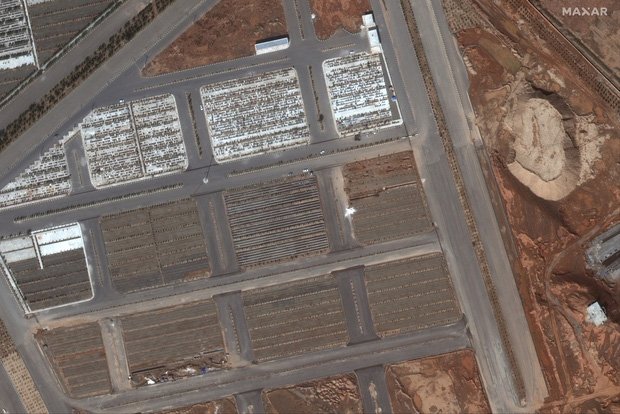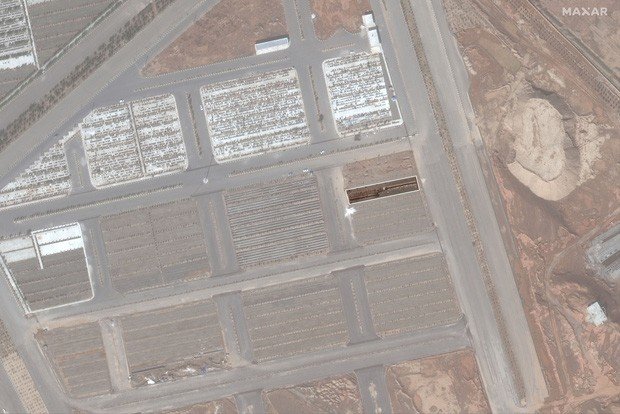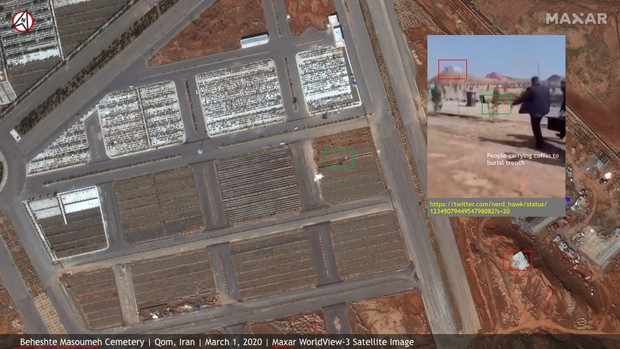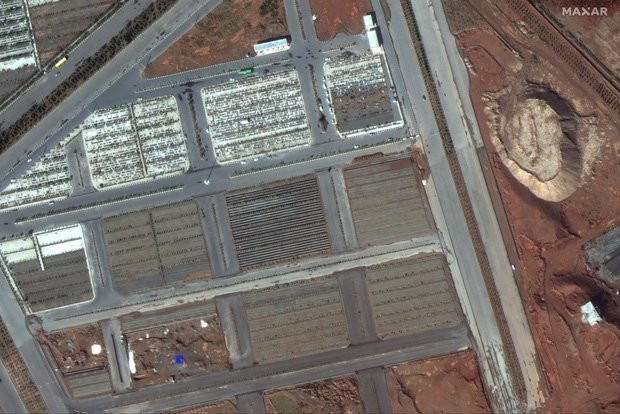The Washington Post reported that just 2 days after Iran announced the first case of infection with the new strain of coronavirus (SARS-CoV-2), evidence of some `unusual` actions appeared in the cemetery near the outbreak site.
At the Behesht-e Masoumeh complex in Qom city, about 100km south of Tehran, satellite images show a piece of land in the cemetery being dug up since February 21.
According to an anonymous analyst, that trench is to bury victims who died from the new virus in Qom city.
Iran – a country with 80 million people – is suffering from a terrible Covid-19 outbreak, affecting even the country’s leaders.
Statistics show that 846 people were exposed to the virus in Qom city.


An image analysis expert at technology company Maxar Technologies (Colorado, USA) said that the size and speed of digging trenches in Qom does not match the burial rituals common in this area.

The expert (who remained anonymous due to the sensitivity of his work) also showed photos showing the presence of white lime in large quantities, which can be used to control the decomposition process and the smell emitted from the corpse.
In a video posted on the BBC on March 3, the host described the scene at the Behesht-e Masoumeh cemetery, as men carried a coffin toward a ditch lined with endless graves.
`This is the area for virus victims,` – the narrator said, the camera panned to the ditch, where staff in protective clothing stood next to it.
In another video, the host said he was at the Behesht-e Masoumeh cemetery on March 3 – two weeks after the first case in Iran appeared.
`All the graves are very new. It all happened in the last few days. And you can see, the trench goes all the way to the end.`
Source: Washington Post
